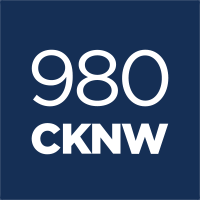Tens of thousands of people took to the streets of Vancouver on Sunday to walk for reconciliation with Canada’s Indigenous peoples.

It’s the second time the event has come to the city, with the inaugural walk in 2013 drawing about 70,000 people.
Chief Robert Joseph, co-founder of Reconciliation Canada, said that the 2013 walk was meant to draw attention to Truth and Reconciliation Commission (TRC) hearings that were happening at the time.
That process shone a light on the abuses of Canada’s residential school system and the stories of people who lived through it, finding that the schools amounted to a form of cultural genocide.
This year’s walk, Joseph said, is about building on the progress that has been made in the four years since the TRC report.
“We need to keep it on the front burner,” said Joseph, speaking to CKNW’s The Jill Bennett Show.
Joseph said since that first walk, the country has seen a major shift in the national consciousness, sparking new discussions on Aboriginal issues.
But despite that progress, he says, the reality is that major hurdles remain.
“We need to elevate the condition of the lives of Aboriginal people in this country, because there’s such a huge, huge disparity,” he said.
“We hear about it every day: the poverty and despair and suicide and brokenness. The unemployment. And all of the things that are required to bring us up to the same level as all other Canadians, with respect to living conditions.”
Federal Justice Minister Jody Wilson-Raybould spoke to the assembled crowd in East Vancouver’s Strathcona Park, lauding participants for their participation.
“I am so proud to have looked back on the viaduct to see the thousands of people that are here today — indigenous and non-Indigenous – gathering together to embrace reconciliation and a new way forward.”
Musqueam First Nation Chief Wayne Sparrow, who also participated, said he was grateful to all Canadians who have helped drive the conversation forward.
“And it’s the general public that needs to be acknowledged for them to show up and pass that information on to everybody. I wish CNN was here to see what Trump is doing in the U.S. and how he’s separating them and how our government is bringing everybody together.”
Events like the walk for reconciliation are just one part of the equation to addressing those issues, according to Joseph.
“It’s going to take all of us making an effort to understand our history, why we got to the positions that we’re in, and more importantly, what we need to do to move forward together.”
Changing the way most Canadians understand the country’s history and relationship with Indigenous peoples will also help pressure government to make the big changes that still need to happen, Joseph said.
But that remains a big job, he said, with huge initiatives like addressing rights and titles issues, honouring treaties, and raising living standards for Aboriginal people still unresolved.








Comments